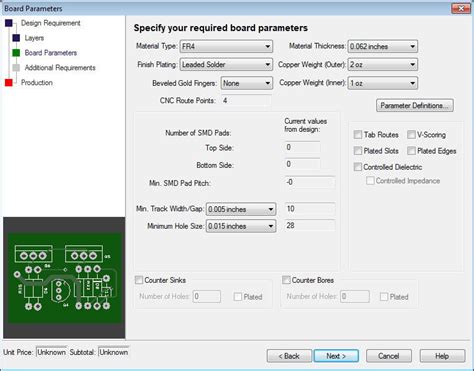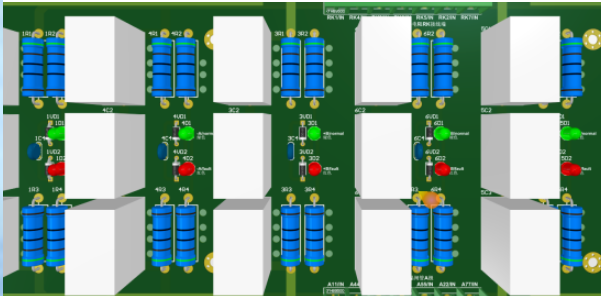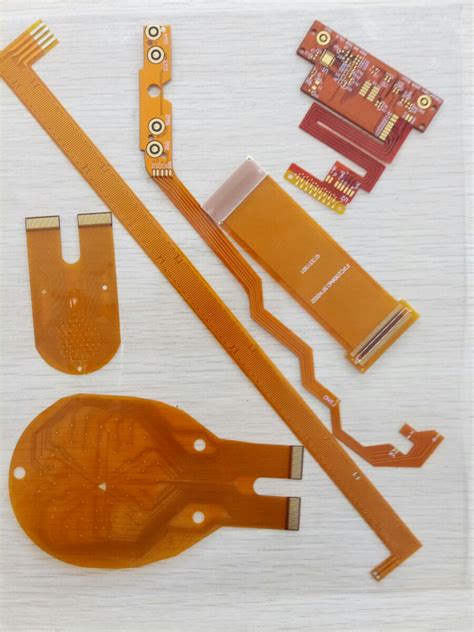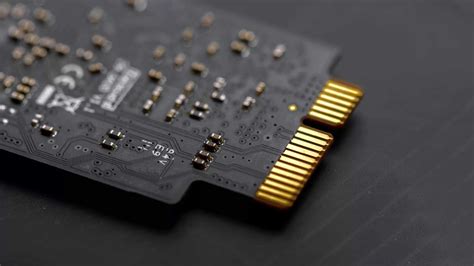Unlocking Innovation with Advanced Circuits: A PCB Artist’s Guide
Key Takeaways
In the journey to master PCB design, there are crucial insights that can enhance your approach to printed circuit boards. Understanding the pcb manufacturing process is vital; it allows you to navigate the landscape of pcb manufacturing companies effectively, ensuring that your designs are feasible and cost-efficient. You need to consider the pcb manufacturing cost as a determining factor when customizing your projects for specific applications. As a designer, you should strategize how to optimize your designs for both performance and budget, keeping in mind that every decision can impact the overall pcb manufacturing business. Utilizing advanced tools like PCB Artist not only streamlines your workflow but also helps you innovate in ways that could significantly reduce costs without compromising on quality. By focusing on these key takeaways, you’ll be better equipped to tackle challenges and unlock new potential in your PCB design efforts.
Unlocking the Potential of PCB Artist: A Comprehensive Overview
In the rapidly evolving world of printed circuit boards (PCBs), utilizing PCB Artist can significantly elevate your design capabilities. This powerful software allows you to unleash your creativity while ensuring that your designs meet the industry’s stringent standards. By fully grasping its features, you not only enhance your design process but also improve collaboration with pcb manufacturing companies. One critical aspect to consider is pcb manufacturing cost, which can vary based on complexity and materials. With PCB Artist, you can experiment with various designs and configurations, giving you insights that may lead to lower production costs. Furthermore, if you’re involved in a pcb manufacturing business, understanding how to navigate design challenges can streamline operations and enhance product quality. As you delve into the software, you’ll discover innovative techniques that pave the way for more effective and efficient PCB designs tailored to your specific needs. For those looking to partner with pcb manufacturing companies, remember that the quality of your designs directly impacts the end result—so leveraging tools like PCB Artist is invaluable for ensuring high-performance boards that align perfectly with industry expectations.
Innovative Techniques for Efficient PCB Design
In today’s fast-evolving technology landscape, efficient PCB design is crucial for optimizing performance and reducing costs. You can harness innovative techniques to elevate your designs, ensuring they meet both your needs and industry standards. One of the most important strategies is to utilize PCB Artist effectively, which offers a range of tools that streamline the design process. By using these advanced features, you can create layouts that minimize signal interference and enhance the reliability of your circuits.
Another significant factor is the meticulous planning of your pcb manufacturing process. Understanding how pcb manufacturing companies operate can provide valuable insights into achieving greater efficiency. For instance, aligning your design specifications with manufacturing capabilities can significantly lower pcb manufacturing cost, enabling you to allocate resources more effectively.
To visualize this, consider the following table outlining various techniques with their corresponding benefits:
| Technique | Benefit |
|---|---|
| Design Rule Check | Ensures compliance with manufacturing constraints |
| Layer Stack Optimization | Reduces material usage, lowering costs |
| Component Placement Best Practices | Improves signal integrity and minimizes costs |
| Thermal Management Techniques | Enhances durability and performance |
“The key to successful PCB design lies not just in creativity but also in adhering to practical manufacturing principles,” suggests an industry expert.
When tailoring your PCBs for specific applications, take advantage of customization options offered by many pcb manufacturing businesses. Such adaptability allows you not only to meet unique project requirements but also to maintain a competitive edge in a crowded market.
By embracing these innovative techniques, you position yourself on the path towards delivering high-quality printed circuit boards that resonate with both functionality and performance while minimizing production challenges.
Tailoring Your PCBs: Customization Tips from Advanced Circuits
When it comes to tailoring your PCBs, customization is crucial for achieving the desired functionality and performance. One of the first steps is to clearly define the specifications of your project. Consider what pcb manufacturing companies offer and how their capabilities align with your unique needs. Advanced Circuits gives you access to a variety of customizable options that can significantly enhance your design. From selecting materials that balance cost and performance to deciding on layer count, every choice impacts your overall pcb manufacturing cost.
Utilizing advanced features within PCB Artist can streamline this customization process, allowing you to tailor parameters such as trace width, hole sizes, and pad shapes. These specifications not only cater to aesthetic preferences but also play a vital role in the effectiveness of signal integrity and thermal management in your final product.
Moreover, understanding the nuances of different pcb manufacturing businesses can empower you to negotiate better terms while ensuring you maintain quality. You can decide on a balance between advanced capabilities and budget constraints by requesting quotes that include all customization options you’re considering. By navigating these choices thoughtfully, you set the foundation for high-quality PCBs that directly satisfy both project requirements and financial budgets. Ultimately, customization through tools like PCB Artist allows you to transform innovative ideas into practical solutions without compromising on quality or performance.
Maximizing Quality: Best Practices for High-Performance PCBs
To achieve high-quality printed circuit boards (PCBs), several best practices are essential. Firstly, selecting the right pcb manufacturing companies is crucial, as they bring diverse expertise and technologies to the table. Conduct thorough research to identify those with a solid reputation for producing reliable and efficient boards. One key aspect is to carefully define your project specifications, ensuring that your pcb manufacturing cost aligns with your budget without compromising quality. Additionally, it’s vital to employ effective design techniques that optimize both performance and manufacturability; this may include using appropriate layer configurations, trace widths, and spacing. Moreover, be mindful of signal integrity considerations like impedance control and routing practices, as these choices significantly impact the performance of your final product. As you navigate the intricacies of the pcb manufacturing business, remember that open communication with your chosen manufacturers can lead to better outcomes. They can provide valuable insights on materials and processes tailored to meet your project’s specific needs while also contributing to a smoother design-to-production transition. By adhering to these best practices, you can enhance the quality of your PCBs while ensuring they remain cost-effective and aligned with emerging industry trends.
Navigating the PCB Design Process with PCB Artist
When you embark on the journey of designing your printed circuit boards (PCBs), utilizing PCB Artist can significantly streamline your process. Begin by familiarizing yourself with the software’s user-friendly interface, which is designed to enhance your productivity. As you navigate through the various tools available, you’ll notice that advanced features allow for intricate designs while maintaining accuracy. Pay close attention to the schematic capture capabilities; these will help ensure that your PCB manufacturing processes are aligned with industry standards.
The importance of effective layout planning cannot be overstated, as it affects everything from signal integrity to thermal management. By implementing innovative strategies within PCB Artist, you can reduce potential issues that might arise during PCB manufacturing. To further enhance your workflow, consider engaging with reputable PCB manufacturing companies, which can offer insights into optimizing designs for manufacturability and lowering overall PCB manufacturing costs.
Remember, careful planning at this stage not only eases the transition into production but also ensures that your final product meets specific requirements. Whether you’re working on a large-scale project or a smaller endeavor, leveraging the right tools and knowledge during this phase lays a solid foundation for a successful PCB manufacturing business. Engage actively with each step of this process to unlock the full potential of your designs and realize high-quality outcomes for your projects.
Troubleshooting Common PCB Design Challenges
When navigating the complex landscape of PCB design, encountering challenges is not uncommon. One of the primary issues you may face is ensuring correct component placement and routing. This becomes critical as improper designs can lead to signal integrity problems or even component failure. Understanding the pcb manufacturing process can aid you significantly in troubleshooting these issues. By partnering with reputable pcb manufacturing companies, you can access valuable insights into best practices that help mitigate potential problems before they arise.
Another challenge is managing the pcb manufacturing cost effectively. You should always consider how design choices impact these costs, ensuring that your design aligns with budgetary constraints without compromising quality. Using advanced features in tools like PCB Artist allows you to simulate various layouts and determine which options provide the best balance of performance and cost.
Moreover, achieving a high-quality board that meets both functionality and longevity requires a deep understanding of potential thermal and electrical issues. By closely collaborating with your selected pcb manufacturing business, you can identify specific challenges tied to material choices and design nuances, enhancing the overall reliability of your final product. Ultimately, proactive communication and a willingness to adapt your designs will empower you to troubleshoot effectively throughout the PCB development process.
Cost-Effective Strategies for PCB Manufacturing
When navigating the intricate landscape of pcb manufacturing, finding ways to cut costs while maintaining quality can be challenging. As you explore the offerings from various pcb manufacturing companies, it’s essential to weigh the pcb manufacturing cost against the efficiency and reliability of their services. One effective strategy is to collaborate closely with your chosen manufacturer, ensuring clear communication regarding your expectations and requirements. This collaboration can lead to optimized processes, reducing both time and expenses in production. Another approach involves taking advantage of bulk ordering; many pcb manufacturing businesses offer significant discounts for larger quantities, which can dramatically lower your overall costs per unit. Additionally, leveraging advanced design tools like PCB Artist not only enhances design precision but also minimizes errors that could lead to costly revisions later on. By implementing these strategies, you’ll not only improve your project’s profitability but also ensure that the quality of your printed circuit boards meets the highest industry standards.
Future Trends in PCB Design and Technology
As you delve into the captivating realm of PCB design, it’s essential to stay abreast of the future trends that are shaping the landscape. One significant evolution lies in the integration of advanced materials within pcb manufacturing, allowing for lighter, more durable, and efficient boards. Alongside this is the rise of automation and AI-driven tools that pcb manufacturing companies are incorporating to streamline design processes, reduce errors, and enhance overall productivity. These advancements not only promise a decrease in pcb manufacturing cost but also foster innovation in designs that meet evolving technological demands. You should also consider how sustainability impacts pcb manufacturing business, as a growing emphasis on environmentally friendly practices compels companies to adopt green technologies and materials. By embracing these trends, you can significantly enhance your PCB designs while aligning with industry standards and consumer expectations.
Conclusion
In summary, embracing Advanced Circuits and utilizing PCB Artist can significantly enhance your approach to PCB manufacturing. The innovative strategies discussed throughout this guide have equipped you with essential tools to navigate the complexities of PCB manufacturing companies effectively. Whether you’re focusing on optimizing your designs for cost efficiency or ensuring the quality of your boards, understanding the underlying principles of pcb manufacturing cost is paramount. Incorporating these methods not only streamlines your workflow but also elevates your output, making your venture into the pcb manufacturing business more competitive and aligned with industry standards. As you apply these insights, you’ll find that the potential for innovation in PCB design is boundless, contributing to both your personal growth and the success of your projects.
FAQs
How can I find reliable PCB manufacturing companies?
To find reliable PCB manufacturing companies, it’s advisable to research various firms online, read customer reviews, and request samples of their previous work. Also, consider checking their certifications and experience in custom PCB manufacturing to ensure they meet your standards.
What factors affect PCB manufacturing cost?
The PCB manufacturing cost can be influenced by several factors including the complexity of the design, the materials used, the volume of production, and any additional features such as surface finishes or specialized coatings. Understanding your project requirements can help you get more accurate quotes.
What is the typical lead time for PCB manufacturing?
Lead times for PCB manufacturing vary based on the manufacturer’s capabilities and current workload. Generally, standard production may take from a few days to a couple of weeks. If you require faster delivery, many manufacturers offer expedited services at an additional cost.
Are there cost-effective strategies for managing a PCB manufacturing business?
Yes, adopting strategies such as bulk ordering materials, optimizing designs for manufacturability, and leveraging advancements in automation can significantly reduce costs in your PCB manufacturing business. Efficient project management will also help keep timelines on track while minimizing unnecessary expenses.
What innovations should I look for in PCB design technology?
Staying updated on innovations like flexible circuits, automated assembly techniques, and environmentally friendly materials can enhance both design capabilities and PCB manufacturing efficiency. These advancements not only improve performance but also cater to current market demands for sustainability.







